- Custom Magnets
- Standard Magnets
- Mounting Magnets
- Magnetic Assemblies
- About Us
- Knowledge
A hook magnet, also known as a magnetic hook, is a versatile tool for hanging and organizing various items. It typically consists of a magnet with a hook attached, creating a convenient way to suspend objects from metal surfaces.
The agent hooks are made from steel with coatings. There are ordinary hooks and closed hooks, as well as swivel hooks.


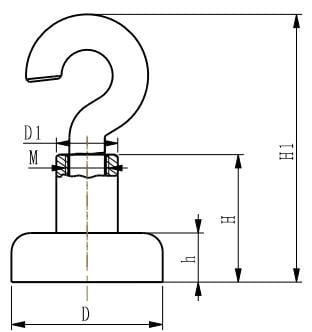
| Model | D (mm) | D1 (mm) | h (mm) | H (mm) | H1 (mm) | M | Weight (g) | Pull-off Force (kg) |
|---|---|---|---|---|---|---|---|---|
| SNE10 | 10 | 6 | 5 | 12.5 | 33 | M3 | 6 | 2 |
| SNE12 | 12 | 6 | 5 | 12.5 | 33 | M3 | 7 | 4 |
| SNE16 | 16 | 6.5 | 5 | 12.6 | 35 | M4 | 12 | 8 |
| SNE20 | 20 | 6.5 | 7 | 14 | 36 | M4 | 21 | 12 |
| SNE25 | 25 | 7.5 | 8 | 17 | 45 | M5 | 37 | 23 |
| SNE32 | 32 | 10 | 8 | 18 | 48 | M6 | 61 | 34 |
| SNE36 | 36 | 10 | 8 | 18 | 48 | M6 | 69 | 50 |
| SNE42 | 42 | 10 | 8.6 | 18 | 48 | M6 | 101 | 72 |
| LNE48 | 48 | 12 | 11 | 24 | 61 | M8 | 182 | 81 |
| LNE60 | 60 | 12 | 15 | 28 | 64.5 | M8 | 362 | 160 |
| LNE75 | 75 | 17 | 18 | 35 | 81 | M10 | 681 | 270 |

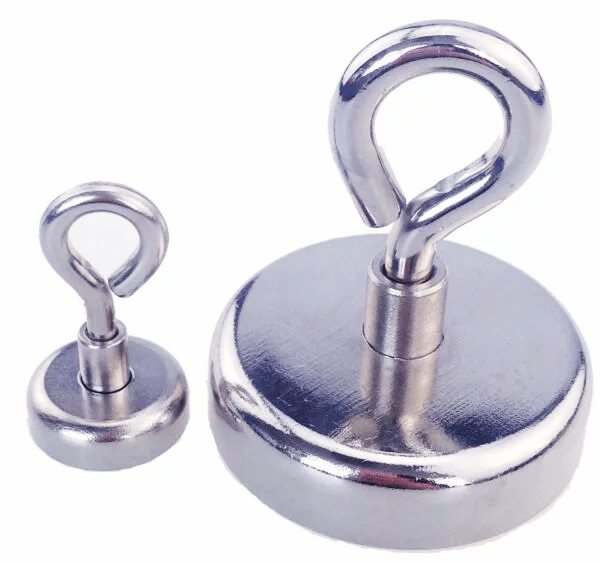
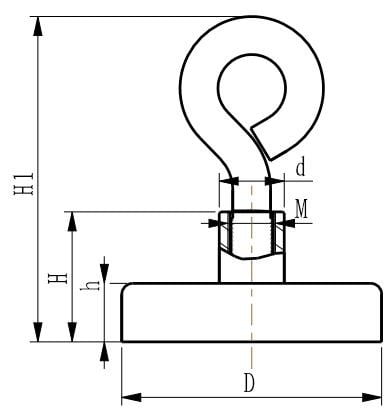
| Model | D (mm) | d (mm) | h (mm) | H (mm) | H1 (mm) | M | Weight (g) | Pull-off Force (kg) |
|---|---|---|---|---|---|---|---|---|
| SNF10 | 10 | 6 | 5 | 12.5 | 33 | M3 | 7 | 2 |
| SNF12 | 12 | 6 | 5 | 12.5 | 33 | M3 | 8 | 4 |
| SNF16 | 16 | 6.5 | 5 | 12.6 | 34.6 | M4 | 12 | 8 |
| SNF20 | 20 | 6.5 | 7 | 14 | 36 | M4 | 21 | 12 |
| SNF25 | 25 | 7.5 | 8 | 17 | 44.5 | M5 | 38 | 23 |
| SNF32 | 32 | 10 | 8 | 18 | 47.5 | M6 | 63 | 34 |
| SNF36 | 36 | 10 | 8 | 18 | 47.5 | M6 | 71 | 50 |
| SNF42 | 42 | 10 | 8.6 | 18 | 47.5 | M6 | 106 | 72 |
| LNF48 | 48 | 12 | 11 | 24 | 60.5 | M8 | 187 | 81 |
| LNF60 | 60 | 12 | 15 | 28 | 64.5 | M8 | 367 | 160 |
| LNF75 | 75 | 17 | 18 | 35 | 91 | M10 | 697 | 270 |
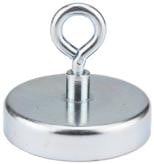

| Model | D (mm) | d (mm) | h (mm) | H (mm) | H1 (mm) | M | Weight (g) | Pull-off Force (kg) |
|---|---|---|---|---|---|---|---|---|
| SFE25 | 25 | 6.5 | 7.4 | 15.5 | 37.5 | M4 | 25 | 4.5 |
| SFE32 | 32 | 6.5 | 6.9 | 15.6 | 37.6 | M4 | 34 | 8.5 |
| SFE36 | 36 | 6.5 | 7.9 | 16 | 38 | M4 | 48 | 11 |
| SFE40 | 40 | 7.5 | 7.9 | 17.9 | 45.4 | M5 | 58 | 13 |
| SFE47 | 47 | 7.5 | 9 | 18.5 | 46 | M5 | 88 | 18 |
| SFE50 | 50 | 7.5 | 9.9 | 19.4 | 46.9 | M5 | 109 | 23 |
| SFE57 | 57 | 7.5 | 10.4 | 19.9 | 47.4 | M5 | 148 | 29 |
| SFE63 | 63 | 10 | 14 | 25.5 | 55 | M6 | 220 | 36 |
| SFE80 | 80 | 10 | 18 | 31.2 | 67.7 | M8 | 430 | 62 |

| Model | D (mm) | d (mm) | d1 (mm) | h (mm) | H (mm) | L (mm) | W (mm) | I (mm) | Weight (g) | Vertical Pull-off (kg) | Side Pull-off (kg) |
|---|---|---|---|---|---|---|---|---|---|---|---|
| SNG25 | 25 | 20 | 13.5 | 8 | 15.5 | 53.5 | 23 | 24 | 38 | 17 | 3.5 |
| SNG32 | 32 | 20 | 13.5 | 8 | 15.5 | 53.5 | 23 | 24 | 52 | 30 | 5.5 |
| SNG36 | 36 | 20 | 13.5 | 8 | 15.5 | 53.5 | 23 | 24 | 65 | 40 | 6.5 |
| SNG42 | 42 | 20 | 13.5 | 8.6 | 16.1 | 53.5 | 23 | 24 | 92 | 60 | 8 |

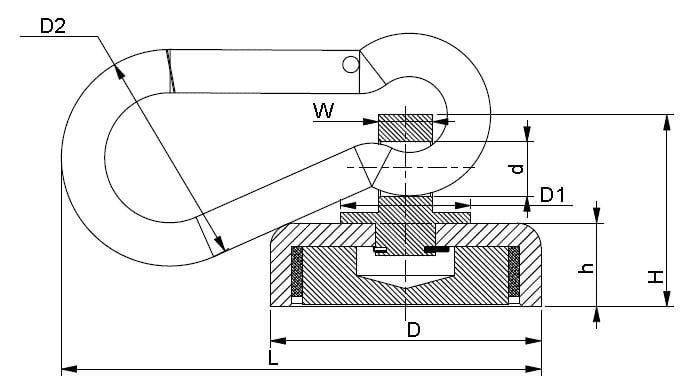
| Model | D (mm) | d (mm) | d1 (mm) | d2 (mm) | W (mm) | H M | h (g) | Weight (kg) | Pull-off Force (kg) |
|---|---|---|---|---|---|---|---|---|---|
| SNL25 | 25 | 12 | 4 | 6.5 | 5 | 18.5 | 8 | 30 | 23 |
| SNL32 | 32 | 12 | 4 | 6.5 | 5 | 18.5 | 8 | 47 | 28 |
| SNL36 | 36 | 15 | 5 | 6.5 | 5 | 18.5 | 8 | 59 | 35 |

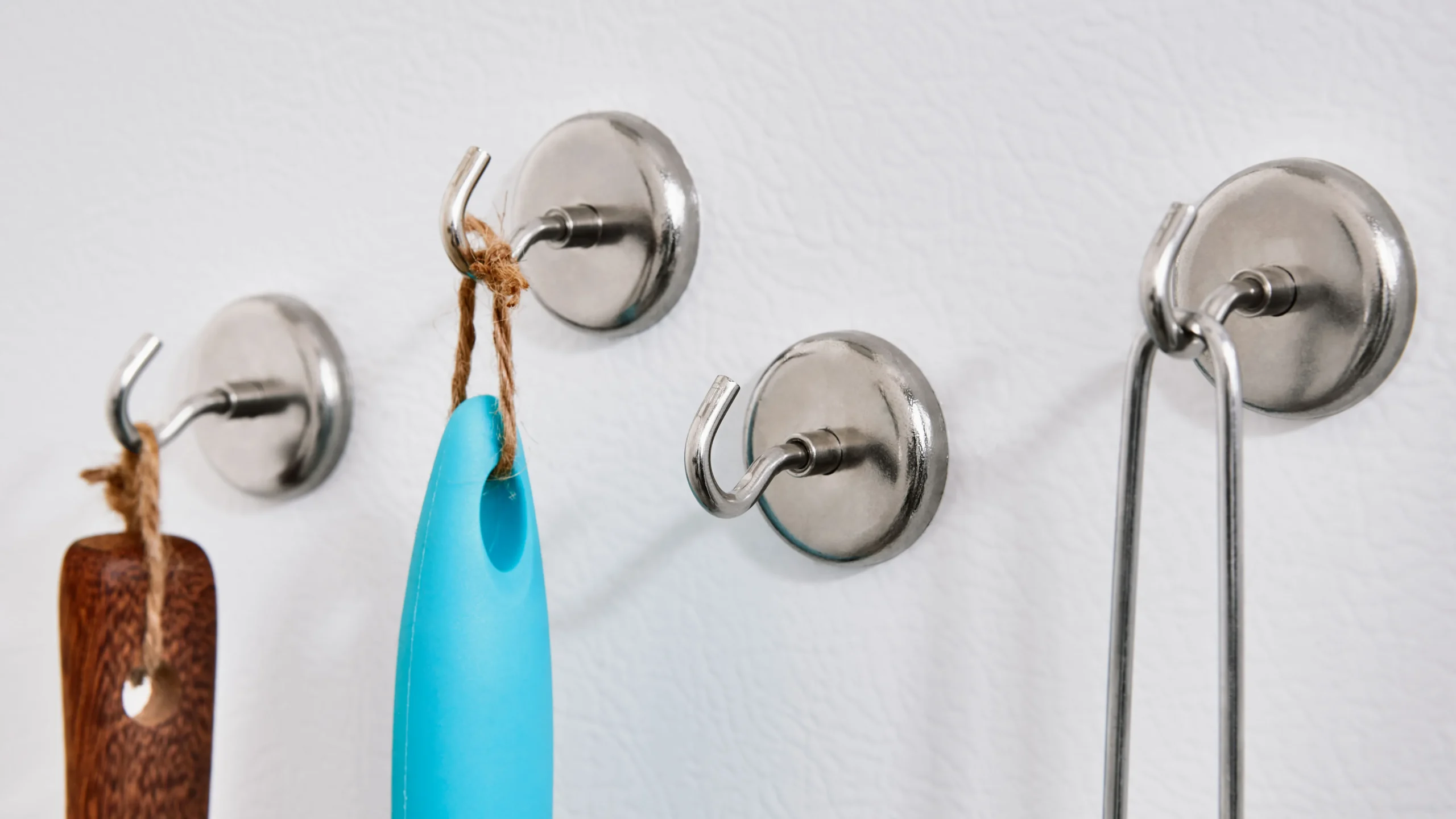
Hook magnets are versatile tools that have transformed how we organize, display, and store objects in a variety of settings—from homes and workshops to commercial and industrial environments. These magnets are specially designed with a hooked end, allowing you to hang items without any need for drilling or permanent fixtures. In this article, we explore the design, functionality, applications, and purchasing considerations for hook magnets, along with detailed answers to frequently asked questions.
In today’s fast-paced world, convenience is key. Whether it’s hanging a set of keys on your refrigerator, organizing tools in your garage, or keeping important documents visible in an office or even on a cruise ship, hook magnets provide a flexible, damage-free, and reusable solution. They come in various sizes and weight ratings—some designed for heavy-duty industrial tasks and others optimized for everyday household use.
This guide will cover:
Let’s begin by understanding what hook magnets are and why they are such a popular choice.
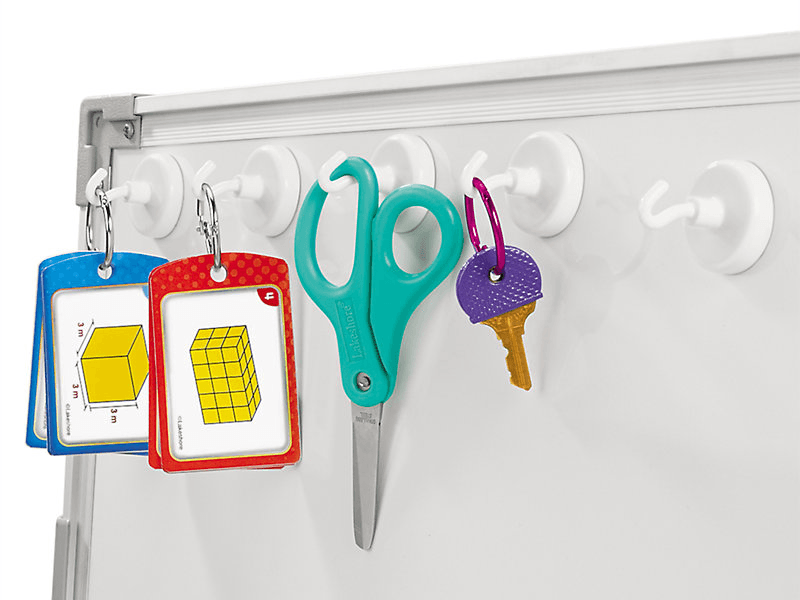
Hook magnets combine the properties of strong permanent magnets with a hook or loop designed for hanging objects. They are typically made with high-grade neodymium (NdFeB) or other rare-earth magnetic materials that offer a high pulling force relative to their size. The magnetic component is encased in a durable housing—sometimes with an additional rubber or plastic coating—to prevent scratching surfaces and to provide extra grip.
Hook magnets have found applications in numerous fields due to their ease of use and adaptability. Here are some common applications:

Below is Table 1, which compares several popular hook magnet options from different retailers.
Table 1. Comparison of Popular Hook Magnet Options
| Feature/Brand | Magnetic Hooks (Heavy Duty, 50 lbs) | Magnetic Hooks for Refrigerator | Harbor Freight Magnetic Hooks | Magnetic Hooks from Home Depot/Walmart |
| Material | Neodymium with protective coating | Neodymium (often with rubber feet) | Neodymium-based heavy-duty | Neodymium or ceramic magnets |
| Weight Capacity | Up to 50 lbs pull force | 10–25 lbs (light to medium) | 30–40 lbs (heavy duty options) | Ranges from 12 lbs to 40–50 lbs |
| Typical Application | Industrial, workshop, storage | Home, kitchen, office | DIY projects, garages | Home improvement, organizational storage |
| Availability | Online specialty retailers | General home improvement stores | Harbor Freight stores | Home Depot, Walmart, and similar retailers |
| Price Range | Moderate to high | Low to moderate | Budget-friendly | Competitive pricing |
The underlying principle behind hook magnets is simple: they combine the magnetic force of a permanent magnet with the mechanical advantage of a hook. When you place a hook magnet on a ferrous surface (one that contains iron or steel), the magnetic field is strong enough to adhere to that surface. The hooked part then functions as a support for hanging objects.
The effectiveness of a hook magnet is often expressed in terms of pull force—the force required to remove the magnet from a surface. For example, a “50 lbs magnetic hook” means that under ideal conditions (direct pull perpendicular to the surface), the magnet can hold up to 50 lbs of weight. However, when the magnet is used on a vertical surface, the effective holding capacity might be reduced due to gravity and potential sliding.
High-quality hook magnets are engineered to minimize this reduction, often by incorporating features such as:
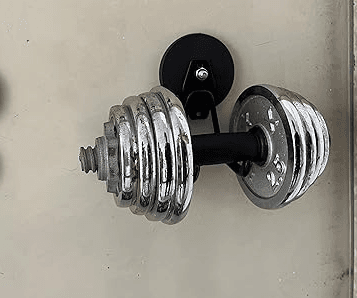
When it comes to permanent magnets, neodymium magnets are currently the strongest available. In hook magnet applications, heavy-duty neodymium hook magnets with pull forces of 50 lbs or more are available. It’s important to note that the “pull force” listed on packaging is based on ideal laboratory conditions. In real-world usage, factors such as the surface material, magnet orientation, and any gap (for example, paint or rust) can significantly reduce the effective holding strength.
The strongest pulling magnets in the hook magnet category are typically found in industrial applications. Some specialized heavy-duty hook magnets are designed with enhanced magnetic circuits and protective coatings that allow them to maintain high pull force even on less-than-ideal surfaces.
Now that you know what hook magnets are and their common applications, here are some practical tips to maximize their use:
Determine Your Load Requirements:
Estimate the weight of the items you plan to hang. If you need to support heavy tools or multiple items, choose a magnet with a higher pull force than the calculated load.
Surface Considerations:
Hook magnets require ferromagnetic surfaces to adhere properly. Check that the surface (e.g., metal door, filing cabinet, or refrigerator) is compatible and free from excessive paint, rust, or non-magnetic coatings.
Design Features:
Look for magnets with features such as:
Imagine a busy family kitchen with limited counter space. The refrigerator becomes more than just an appliance—it transforms into an organizational hub. Magnetic hooks can be attached to the refrigerator door to hang lightweight items such as keys, utensils, or even small potted herbs. This not only keeps the kitchen tidy but also ensures that frequently used items are always at hand.
One family replaced their traditional cork bulletin board with a series of magnetic hooks and small metal organizers. This change made it easier to update schedules, hang notes, and even display children’s artwork. The magnets’ reusability meant that the organizers could be moved effortlessly as the family’s needs evolved.
In warehouses and retail environments, magnetic hooks are used not only for storage but also for display purposes. For instance, trade show booths often employ magnetic hooks to hang banners and product samples, allowing for quick setup and removal without damaging the display surfaces.
One manufacturing company replaced traditional pegboards with magnetic hook systems on their assembly lines. This adaptation allowed workers to quickly access frequently used tools, boosting productivity and reducing downtime.
In a well-equipped garage or workshop, heavy-duty magnetic hooks are invaluable. A mechanic, for example, might use them to hang wrenches, screwdrivers, and other tools on a metal tool chest. This creates a portable and reconfigurable system that can be adapted to different tasks. The magnets are strong enough to hold heavy tools without the need for permanent mounting, reducing the risk of damaging expensive equipment or the work surface.
A local hardware store even began offering “magnetic tool holders” as a promotional item—an innovation inspired by customer feedback on the convenience and flexibility of hook magnets.
Cruise cabins are famously compact, and many travelers resort to ingenious hacks to maximize space. Magnetic hooks have become a popular travel accessory for cruise-goers. On board, these magnets are used to hang lanyards (for key cards), hats, wet bathing suits, and even small bags. Their lightweight and compact nature makes them easy to pack, and they can be attached to metal surfaces within the cabin—such as a metal door or a portion of the ship’s decor—to create extra storage without permanent fixtures.
Travelers often report that once they start using magnetic hooks, they wonder how they ever managed without them. They become a multi-purpose tool: from keeping personal items organized to even hanging a small fan during warmer days.
When shopping for hook magnets, here are some factors to consider:
Hook magnets represent an innovative fusion of magnetic strength and ergonomic design. Their ability to hang objects on metal surfaces without damaging them makes them indispensable in a range of settings—from home and office organization to industrial workshops and even cruise cabins. With the availability of heavy-duty neodymium magnets, consumers and professionals alike can find a magnetic hook solution tailored to their needs.
By considering factors such as pull force rating, durability, design features, and environmental suitability, you can select the perfect hook magnet for any application. Whether you’re upgrading your home organization system, setting up a temporary trade show display, or enhancing your cruise experience, hook magnets offer a smart, efficient, and versatile solution.
This article has explored the ins and outs of hook magnets—from their design and physics to practical applications and buying tips. With two comprehensive tables summarizing product comparisons and FAQs, we hope this guide provides all the information you need to choose and use hook magnets effectively. Embrace the power of strong magnets with hooks and transform your organizational systems today!
Hook magnets are used in a wide variety of settings to hang or suspend objects from metal surfaces. Common applications include:
The strongest pulling magnets are typically neodymium magnets due to their high energy product and exceptional pull force relative to their size. In hook magnet form, heavy-duty neodymium models can be rated for pull forces up to 50 lbs or even higher under ideal conditions. However, real-world performance depends on factors such as surface condition and magnet placement. It’s always wise to select a magnet with a rated pull force that exceeds the anticipated load by a healthy margin.
While Dollar Tree may offer various household organization products, specialized magnetic hooks—especially those with high pull forces like heavy-duty neodymium variants—are generally not a staple of their inventory. Dollar Tree tends to focus on lower-cost, lower-performance items. For high-quality magnetic hooks, it is recommended to check home improvement stores, online specialty retailers, or larger chain stores such as Home Depot or Walmart.
Cruise ship cabins are notoriously compact, and space is at a premium. Travelers often use magnetic hooks for several reasons:
Whether or not you need magnetic hooks on a cruise depends on your personal preferences and your cabin’s layout:
Hook magnets combine a magnet with a hook, allowing you to hang items on metal surfaces without screws or nails. They rely on the magnetic force (often from neodymium magnets) to adhere firmly to ferromagnetic materials.
They work best on ferrous surfaces—such as steel or iron found on doors, cabinets, and filing systems. They generally won’t stick to non-magnetic materials like aluminum, wood, or glass (unless used with a metal intermediary).
Their holding power varies by model. Many hook magnets are rated to hold anywhere from 15 to 50+ pounds of pull force on ideal (thick, clean) metal surfaces. Actual capacity may be lower on thinner or painted metals.
Consider the weight you plan to hang, the type of metal surface available, and the hook design. Look for a magnet with a holding capacity that exceeds your load and one that’s designed for your specific application (indoor, outdoor, heavy-duty, etc.).
Generally they’re gentle on surfaces; however, on softer or delicate finishes, they might leave minor marks or scratches. Using a protective barrier (like a cloth or rubber pad) between the magnet and the surface can help prevent this.
Yes—provided you select a model designed for weather resistance. Outdoor hook magnets often feature protective coatings (such as rubber or stainless steel) to guard against corrosion in humid or wet conditions.
Modern hook magnets (especially those with shorter, controlled magnetic fields) are typically safe. That said, very strong magnets should be kept a little further from sensitive electronics, credit cards, or medical devices to avoid any potential interference.
While adhesive hooks are useful on non-metal surfaces, hook magnets offer easy repositioning and don’t leave residue or require drilling. They’re ideal for metal surfaces and tend to be more durable and reusable over time.